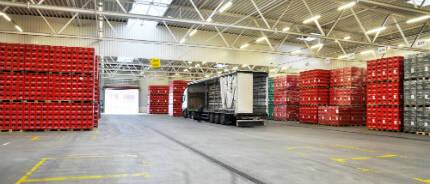External storage takes place outside the company. The counterpart is internal storage. Taking into account various costs, such as warehouse operating and inventory costs, a break-even analysis can provide information on whether internal or external storage is worthwhile. The analysis clearly shows the sales volume at which revenue and costs break even.
When is external storage suitable?
External storage is suitable and unproblematic for inventory that does not require special storage. There can be various reasons why a company decides to use external storage instead of internal storage. These reasons include:
- Limited storage capacity
- Lack of storage facilities
- Internal storage would be too cost-intensive
- Fluctuating demand
Advantages of external storage are that there are no investment and maintenance costs, nor costs for storage facilities and your own personnel. In addition, the warehouse operator bears the costs for training its personnel. Furthermore, you only pay for the inventory that is actually stored. This means that there are no empty costs due to poor warehouse utilization.
Disadvantages include dependence on the warehouse operator and longer information and transport routes. Due to its dependence on the logistics service provider, a company should be prepared for possible unreliability when outsourcing storage.
For more information on the expenses associated with warehousing, see Inventory costs.
Image source: © Industrieblick – Fotolia.com
